A few weeks ago, I had the opportunity to attend the Arm Neoverse Tech Day 2019. The focus was on the company’s next-generation cores for their newly minted Neoverse brand. During the Neoverse Tech Day, the company showed off architectural details of the Neoverse N1 and Neoverse E1 CPUs. The company discussed performance and brought enthusiastic partners to tout the ecosystem. Over the past few weeks, I spent time jotting down thoughts as I believe there are two stories. The first is the actual architectural details of the Neoverse N1 and Neoverse E1. A second is where do they fit into the market. Traditionally on STH, we would have split this into 2-3 pieces, but instead, we are going to try this as one larger piece.
In this article, we are going to touch on five key points to guide our discussion. In turn here is where we are:
- Taking Stock on Where we are in the Arm Journey
- Arm Neoverse N1 Core Architecture
- State of the Arm Neoverse N1 and Testbed
- Arm Neoverse E1 Core Architecture
- Our Market Perspective and Final Thoughts
At STH, we do a large number of embedded server reviews. Indeed, the two days preceding this article we had our Intel Atom C3758 review followed by our world-first exclusive AMD EPYC 3201 review piece. We also have worked with the Arm servers targeting mainstream workloads including the Cavium ThunderX2 where I spoke at the chips’ launch. Anything new in the server space is exciting, and the Arm Neoverse we see as a key trend later in 2019 and into 2020.
Taking Stock on Where We Are in the Arm Server Journey
The first key point I wanted to cover is taking stock of where we are in the Arm server journey. Consumer and mobile spaces have swiftly moved to Arm compute, but the server world moves much slower. There are many in the industry who started the journey years ago, and there have been many hyped but ultimately failed Arm server CPU projects. One of the first we covered was the AMD Opteron A1100 in 2014 which had failed to gain traction by 2016. It was not just startups like Calexda that were running out of funding, “rumor” has it HPE and AMD originally designed the SP3 socket that today’s AMD EPYC platform to support both x86 and Arm cores. AMD’s Arm ambition faded as the Opteron A1100 floundered.
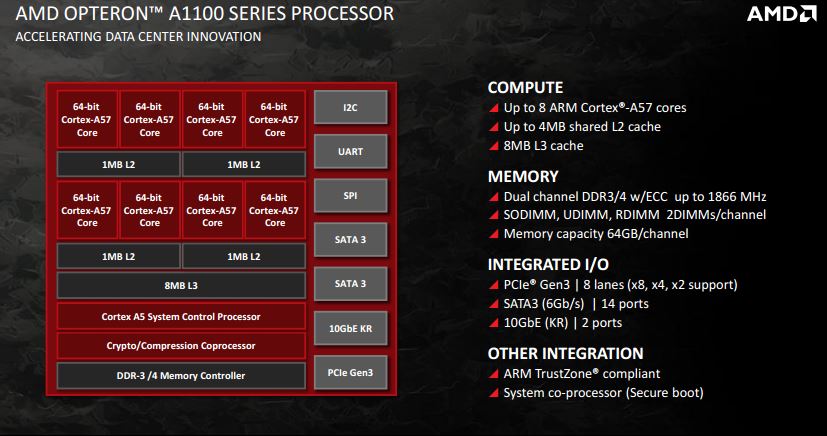
Key to many of the failures is timing. Before Ubuntu 16.04 LTS was released in April 2016, support for Arm was challenging to say the least. In mid-2016 I penned an article: Cavium ThunderX Benchmarks Part II: Why enterprise ARM developers need these machines. In hindsight, it should have been called, “Why datacenter Arm developers need these machines.” 2016 was a watershed year for the Arm server development community.
The Ubuntu teams were much earlier than Red Hat in their adoption of Arm and Arm became a first-class citizen on Ubuntu with the 16.04 release. Ubuntu 16.04 was when, after a firmware upgrade, you could take a Ubuntu iso installer and a Cavium ThunderX platform would work out of the box. Package managers would have packages to install. Before this event, the Ubuntu team spearheaded for the industry, just getting an Arm server to boot was challenging. Once booted Ubuntu 14.04 LTS required many patches and compiling software (and troubleshooting why builds failed) from scratch. Ubuntu 16.04 LTS had packages available in package managers for quick installation.
Coming from a management consulting background, I introduced the STH Software Maturity Model in 2016 as a way to explain Arm’s challenge and progression at the time.
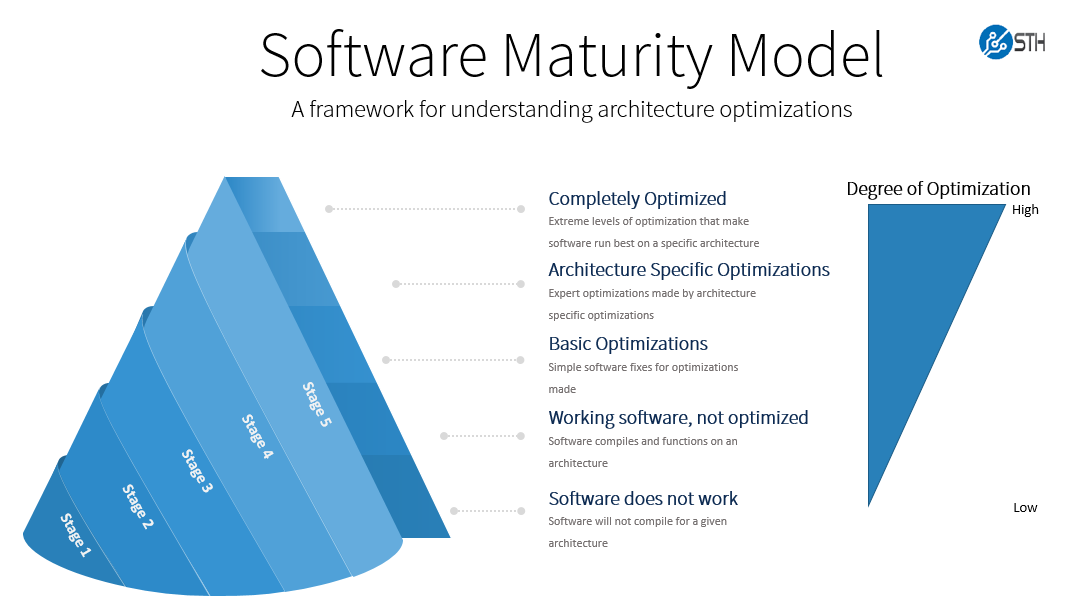
Before Ubuntu 16.04 LTS, Arm servers were for systems developers who were fighting to get out of Stage 1 in this maturity model and just getting a working platform. When Ubuntu 16.04 LTS was released, we saw in uptick to Stage 2 and Stage 3. In some areas, especially in fairly basic use cases like Memcached, nginx web serving, MySQL, and other basic plumbing of the Internet bits, we started to see parts move from Stage 3 to Stage 4.
With the Cavium ThunderX2 release in 2018, I used this simple slide along with the maturity model to show the difference.
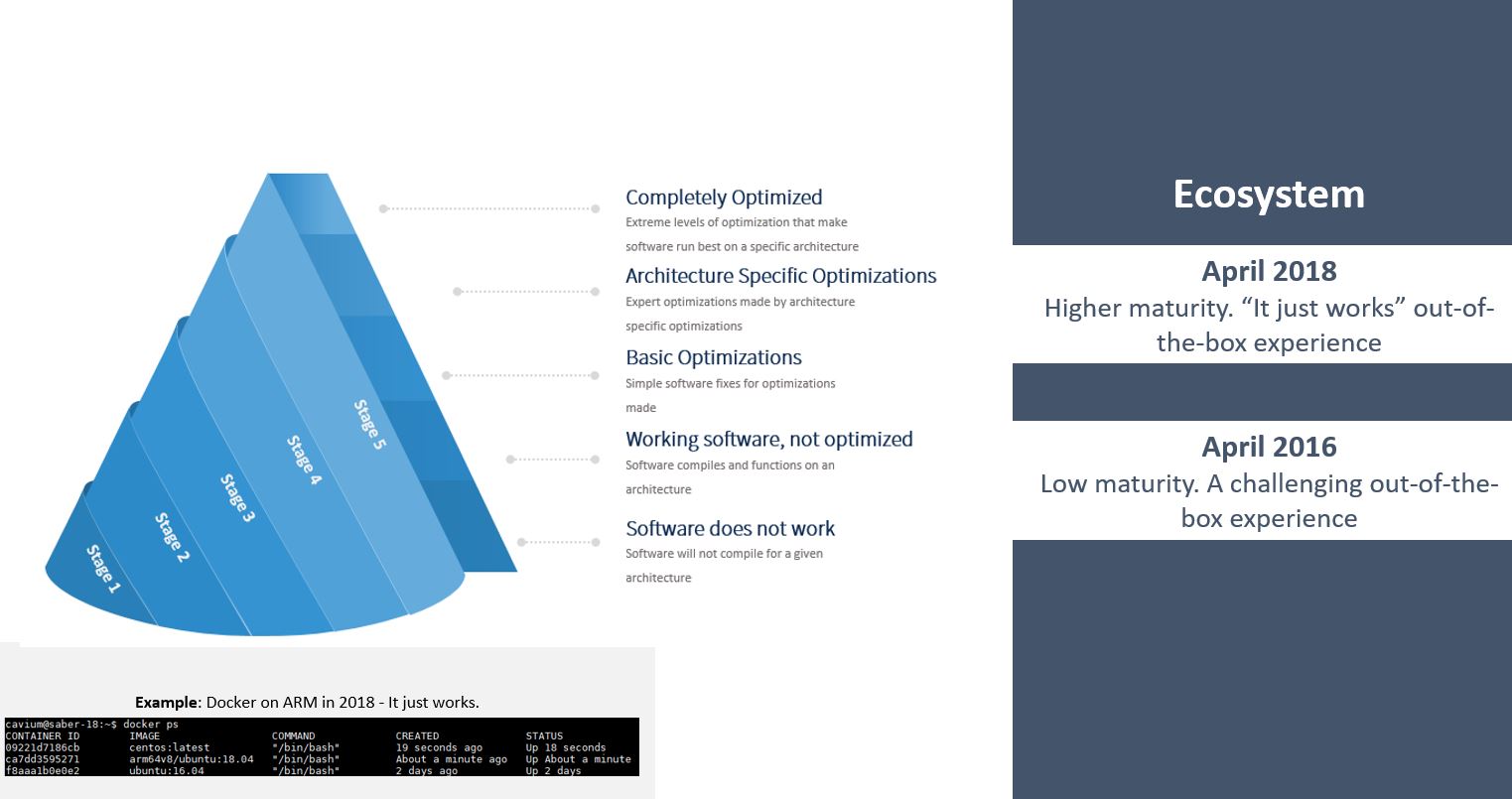
In 2018, the software worked out of the box. Docker worked as easily as it does on the x86 side. As someone who struggled through the March 2016 Ubuntu 14.04 LTS on Arm ecosystem, the experience was completely different.
With the Arm Neoverse announcement and today’s announcement of new Arm cores, I again urge our readers to at least explore Arm servers, like the Cavium (now Marvell) ThunderX2 and the Ampere eMAG. Core performance is still only one part of the equation, and there are multiple lenses that one will look at to evaluate the appropriateness of a solution. Here is a slide I used at the ThunderX2 launch to talk about a few of those lenses.
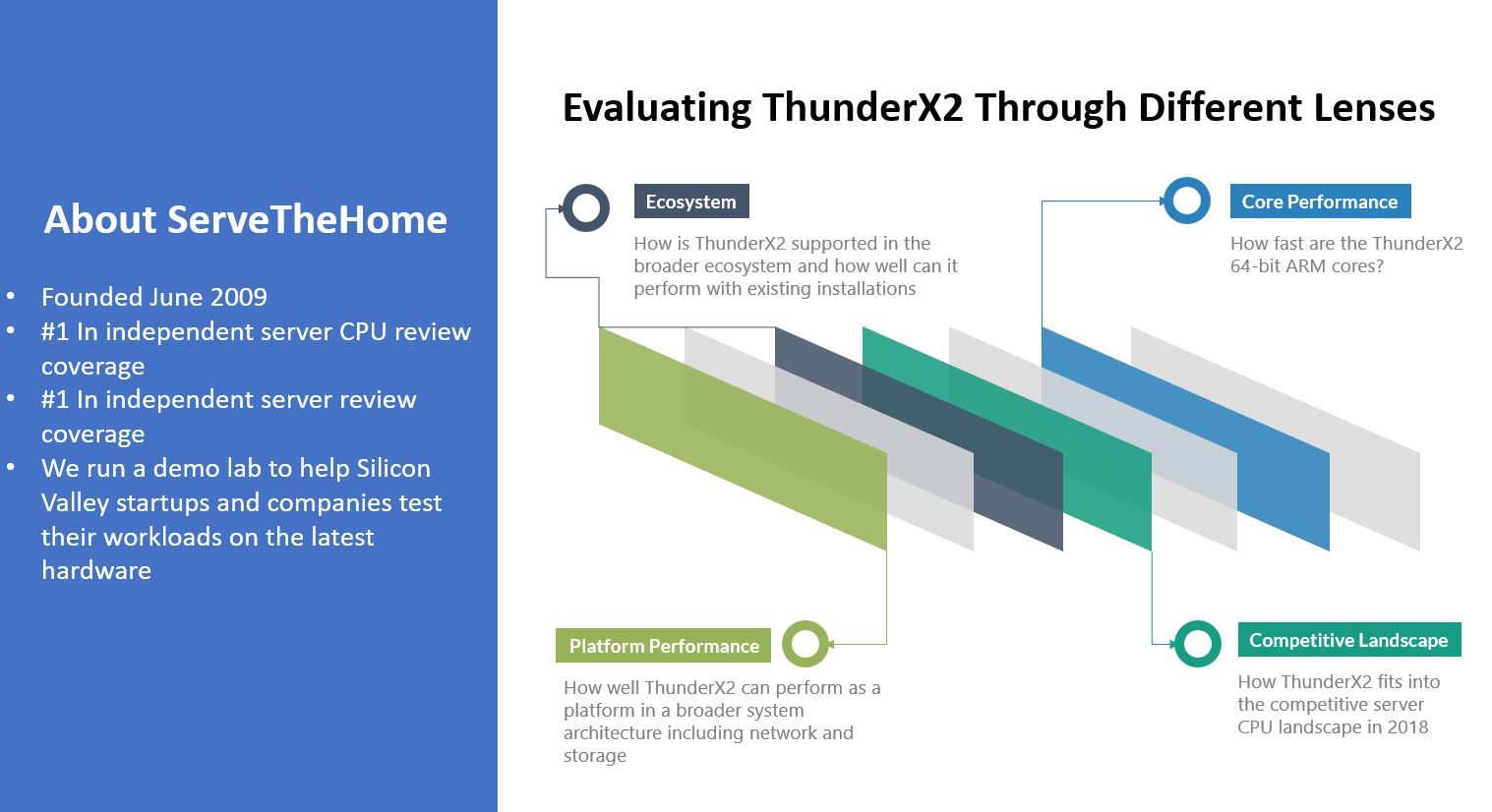
Today, the Arm ecosystem is strong in the open source software world. Most of the larger open source ecosystems work on Arm out of the box, and if you want an application container, there is a good chance that you can find one already built and optimized.
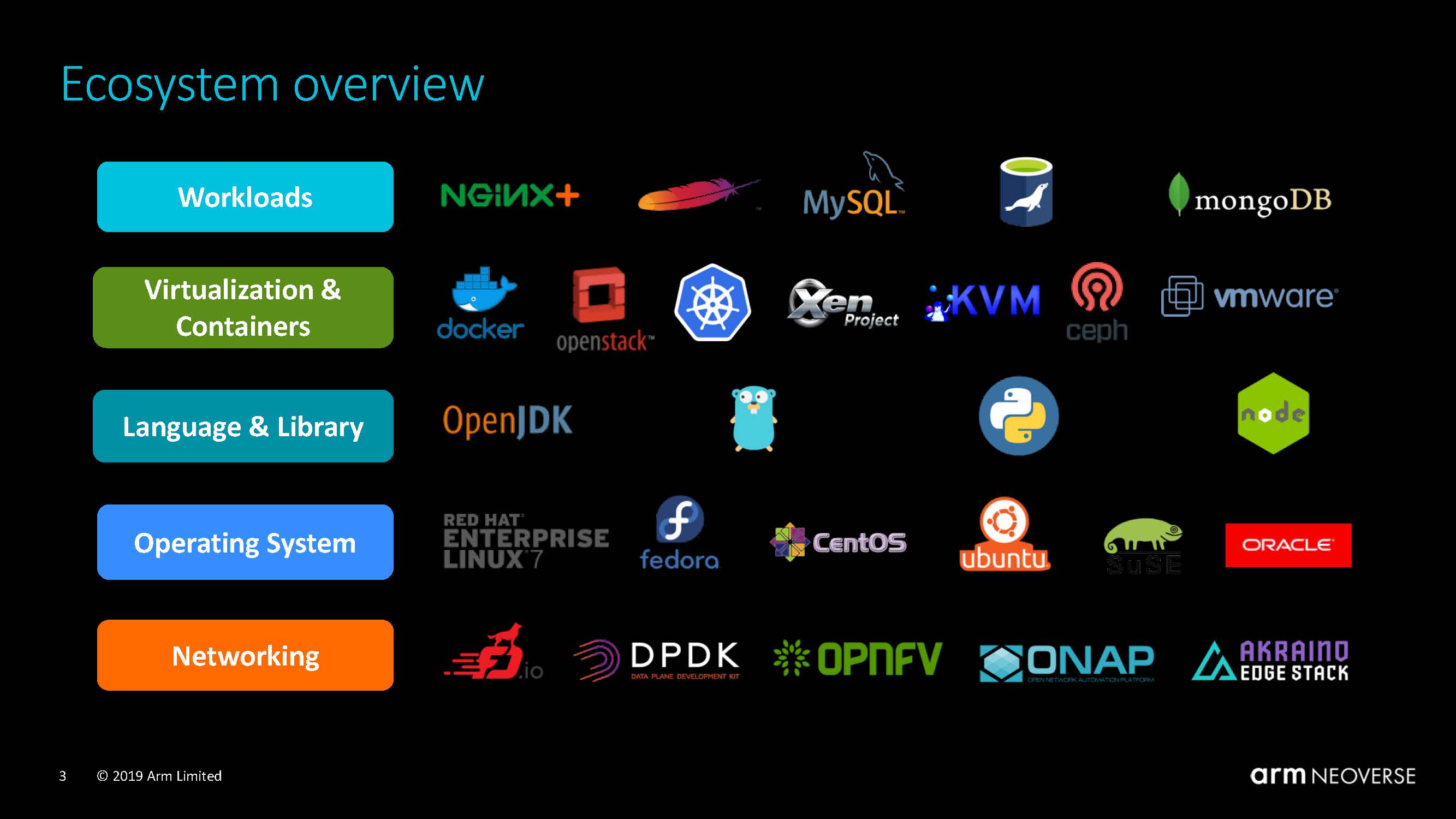
If you want to develop on an Arm system or simply try something out, new consumption models have arisen. There are now several outlets where you can rent Arm servers, the biggest of which is Amazon AWS with Graviton.
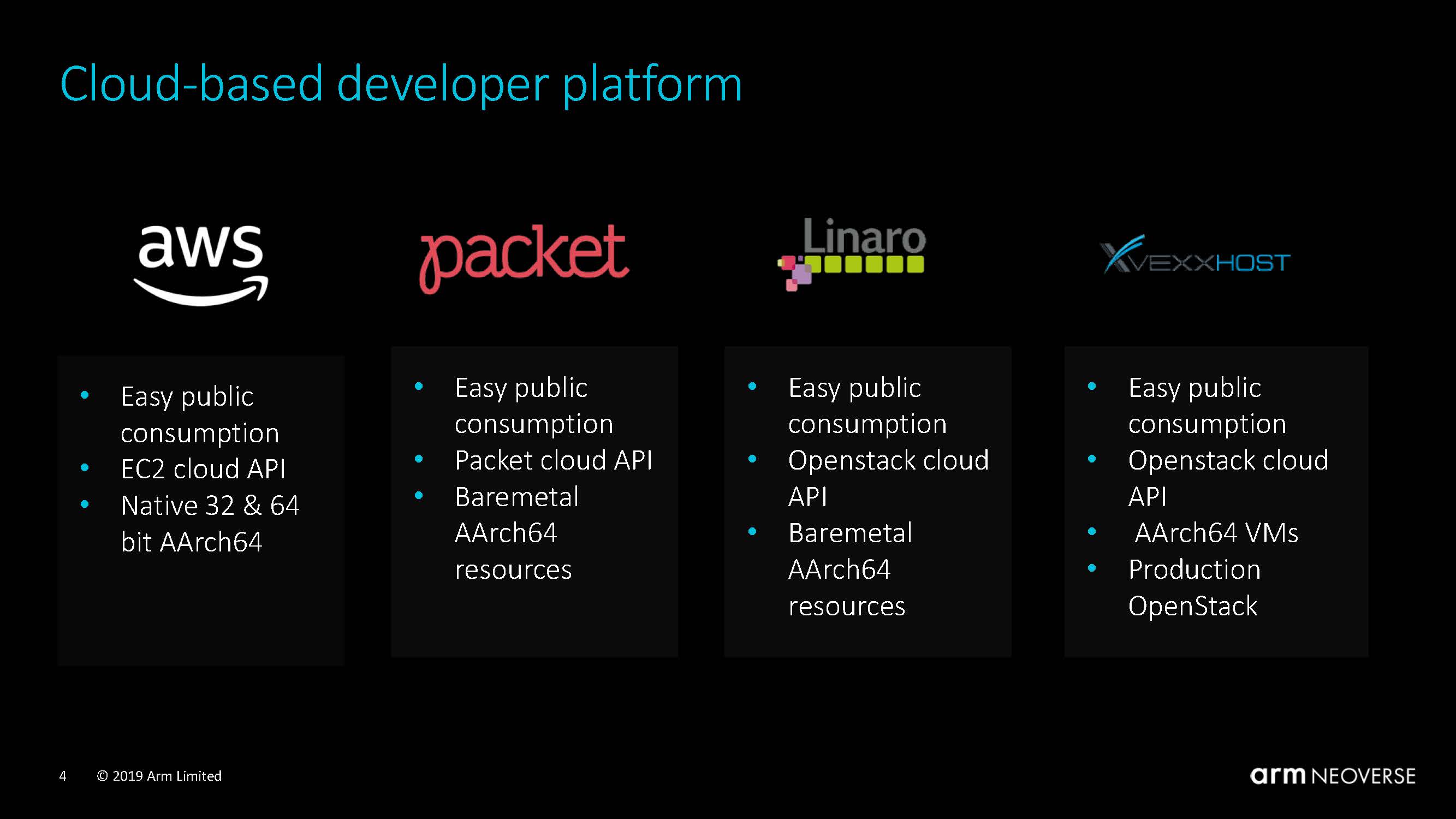
Another honorable mention there is that Packet with its WorksOnArm project has many architectures available. Our piece Hatch Mobile Gaming Running on Qualcomm Centriq 2400 noted that Hatch was running on Packet’s cloud. Packet also has Marvell ThunderX nodes and a new Netronome SmartNIC cloud coming for those that want an Arm CPU alongside an Arm powered Netronome SmartNIC for eBPF.
If you are running open source software stacks, Arm in 2019 is ready to be used by a broad set of organizations. As we move into 2019, the software side has made using Arm largely transparent. You will still see artifacts of this process not being complete, but we are at the point where it is usable.
Moving into 2019, we have the Arm Neoverse N1 and E1 CPUs. We are going to look at the N1 CPU architecture next. We will then see a physical manifestation of the N1 platform in a developer board to show it is now beyond concept and has made it to silicon. We are then going to show off the lower power Neoverse E1 cores before moving on to our market and final thoughts discussion.

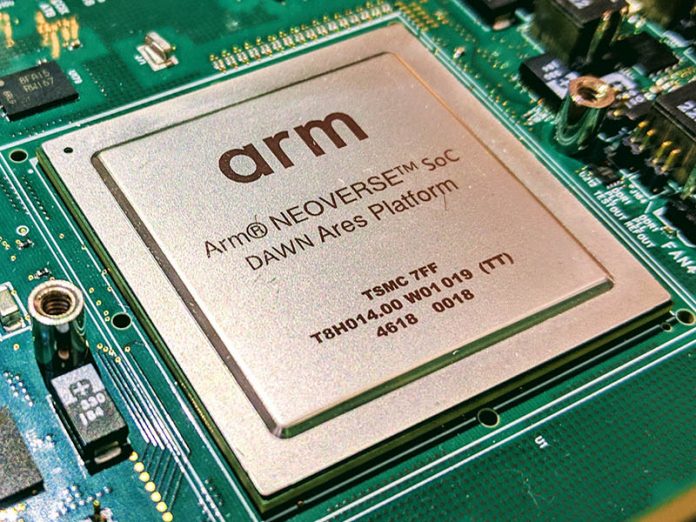



This was a great long read.
STH is now like a mix of the technical side of Anandtech, the business side of TNP, and adding in it’s own mix of hands on experience working with this hw. I can’t wait for your N1 review
This article took me 2 hours to read this morning between meetings and tea. Great read STH.
Amazing article!
Arm is set to dominate the EDGE, I don’t really see how Intel hopes to gain any market share with the power draw of the x86 ecosystem. Given how much money they can out on R&D, we should expect to see something from them … and the Big.Little using Atom little cores doesn’t sound the right approach
M4r1k I don’t know if Arm really has a power consumption advantage when it comes to bigger chips.
https://www.servethehome.com/updated-cavium-thunderx2-power-consumption-results/
Both STH and AT had crazy high power for the ThunderX1 too.
Maybe in mobile they’re way better, but when they’re trying to get feature parity they haven’t proven to use less than modern x86.
How much is the motherboard with an Arm Neoverse N1 8 or 16 cores cpu?
Risky89 – Arm Neoverse N1 CPUs will be coming out in a few quarters. The development board with the Neoverse N1 CPU is a low production unit that is primarily going to companies that are building chips.
thanks Patrick